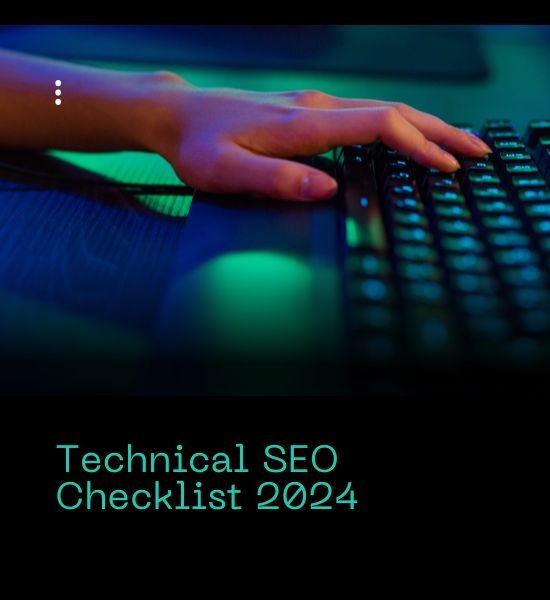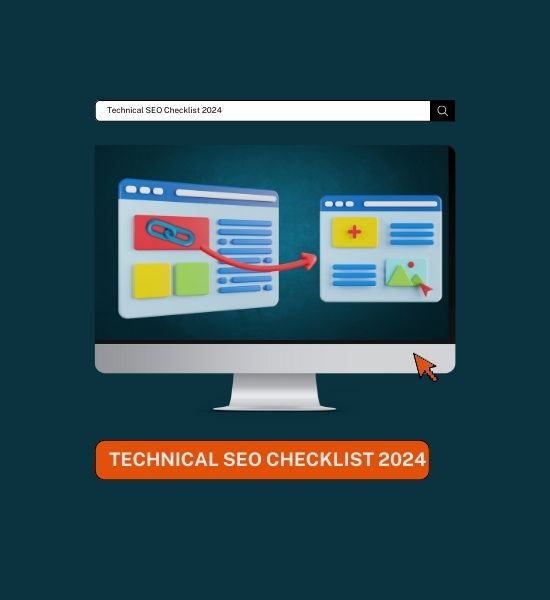Technical SEO Checklist 2024: Where Can You Find Technical SEO Checklist 2024? Learn from this blog about a comprehensive technical SEO Checklist 2024.

What is technical SEO?
Technical SEO Checklist 2024: Technical SEO refers to optimizing a website’s technical aspects to increase its pages’ ranking in search engines.
Technical SEO Checklist 2024: It includes essential elements of the technical web mastering, such as providing search engines with directives, annotations, and signals for them to efficiently crawl, index, and rank a web page.
Technical SEO activities have the potential to influence search engine crawling, indexing, and, consequently, the ranking of a website, whether through direct or indirect means. Technical SEO excludes analytics, keyword research, building backlink profiles, and devising social media strategies.
The following are typical tasks linked to technical SEO:
- Submitting your sitemap to Google
- Creating an SEO-friendly site structure
- Improving your website’s speed
- Making your website mobile-friendly
- Finding and fixing duplicate content issues
Technical SEO Checklist 2024
The goal of technical SEO is to make it easier for search engines to understand and rank your website’s content, which can lead to improved organic search visibility and improved positions in the pages where search engine results are displayed (SERPs).
Technical SEO is an essential part of the broader SEO strategy and is critical for helping search engines understand your website’s content, structure, and relevance to user queries.
Technical SEO is within your control, but it can be a bit trickier to master since it’s less intuitive than on-page SEO.

1. Checking Indexing: Technical SEO Checklist 2024
Indexing is the process of adding a webpage’s content to a search engine’s database to be considered for rankings. Make sure search engines can access and index your website’s pages, including using robots.txt files, XML sitemaps, and proper URL structures.
It is the second step in the process of technical SEO, following crawling. Indexing is essential because it enables search engines to retrieve relevant information quickly and efficiently when a user enters a search query.
Review meta robot tags on individual pages to confirm that they’re set correctly to allow indexing. Confirm that your website is using HTTPS for secure browsing.
2. Sitemaps: Technical SEO Checklist 2024
In technical SEO, a sitemap, often referred to as an “XML sitemap,” is a file that lists all the URLs (web addresses) of a website’s pages, along with additional metadata about each page. The primary purpose of a sitemap is to help search engines understand the structure of a website and to facilitate the crawling and indexing of its content.
Creating and maintaining XML sitemaps that help search engines discover and index your website’s pages more effectively. A sitemap serves as a roadmap for your website, aiding search engines in discovering, crawling, and indexing all the content on your site.
There are four main types of sitemaps: normal XML sitemaps, video sitemaps, news sitemaps, and image sitemaps. Sitemaps are important for technical SEO because they help search engines discover your pages faster.
3. Canonical Tag: Technical SEO Checklist 2024
Canonical tags, also known as rel=canonical tags, are HTML elements used in technical SEO to address the issue of duplicate content on a website. They play a critical role in specifying a web page’s preferred or canonical version when there are multiple similar or duplicate pages.
Setting canonical tags to indicate the preferred version of duplicate or similar content reduces the risk of duplicate content issues.
Here’s how canonical tags work in technical SEO:
- Identifying Duplicate Content
- Setting the Canonical URL
- Indexing Decision

4. Page Speed: Technical SEO Checklist 2024
It assesses the speed and performance of your web pages and provides recommendations for improvement, which can impact both the user experience and SEO rankings. Optimizing website load times to improve user experience and search engine rankings. Search engines tend to prefer websites that load quickly.
Ensuring that your website is responsive and provides a good user experience on mobile devices is important, as mobile friendliness is a ranking factor for search engines, particularly Google.
5. Crawl Errors: Technical SEO Checklist 2024
Crawling is the process of discovering new data on the web, while indexing is the process of categorizing, organizing, and storing this data. Crawling is essential because it enables search engines to retrieve relevant information quickly and efficiently when a user enters a search query.
Ensure that search engine bots can crawl your site efficiently by fixing issues like broken links, redirect chains, and URL parameters. To ensure that your website is crawlable, you should make sure that it is technically optimized.
Monitoring and addressing errors like 404 (not found) or 301 (permanent redirect) errors to ensure a smooth user experience and avoid crawl issues.

Is technical SEO important for website ranking?
Yes, technical SEO is essential for website ranking. Technical SEO is important because it can greatly impact a website’s performance on search engines.
For example, if a website is slow to load, users may get annoyed and leave the site, which can signal to Google that the site doesn’t create a positive user experience, and as a result, Google may not rank the site well.
Technical SEO is within your control, but it can be a bit trickier to master since it’s less intuitive than on-page SEO. Technical SEO ensures that search engines can easily understand and index your website, making it more discoverable to potential customers.
Neglecting technical SEO aspects can hinder a website’s performance and visibility in search results, making it harder to achieve higher rankings.

What are the most popular tools used for technical SEO?
There are many popular tools used for technical SEO.
1. Google Webmaster Tools: This tool is used to analyze how well search engines are crawling and accessing your website.
2. Screaming Frog SEO Spider: This tool is renowned for swift and efficient website analysis and is ideal for time-sensitive audits.
3. DeepCrawl: This tool is exceptional at analyzing large, intricate websites and detecting deeply nested SEO issues.

4. OnCrawl: This tool is noteworthy for its data-driven approach, integrating with other data sources for a comprehensive SEO understanding.
5. Google Search Console: This tool is a free tool offered by Google that allows marketers, web developers, or website administrators to easily monitor their presence in the Google search results.
READ-MORE: Technical SEO Checklist 2024 Master SEO – READ NOWFAQ: Technical SEO Checklist 2024
Why is technical SEO important?
Technical SEO is important for:
- Improving website visibility
- Enhancing user experience
- Avoiding issues with duplicate content
- Improving search engine rankings
What factors are included in Technical SEO?
Here are some of the most important factors included in Technical SEO:
- Crawling
- Indexing
- Mobile-friendliness
- Page speed
How to do Technical SEO?
Here is a step-by-step guide on how to do Technical SEO:
- Understand the basics
- Conduct a site audit
- Optimize website architecture
- Optimize page speed
- Create an SEO-friendly sitemap
This content is only provided for information purposes, contact us by email.
Follow us on Facebook and Pinterest.

